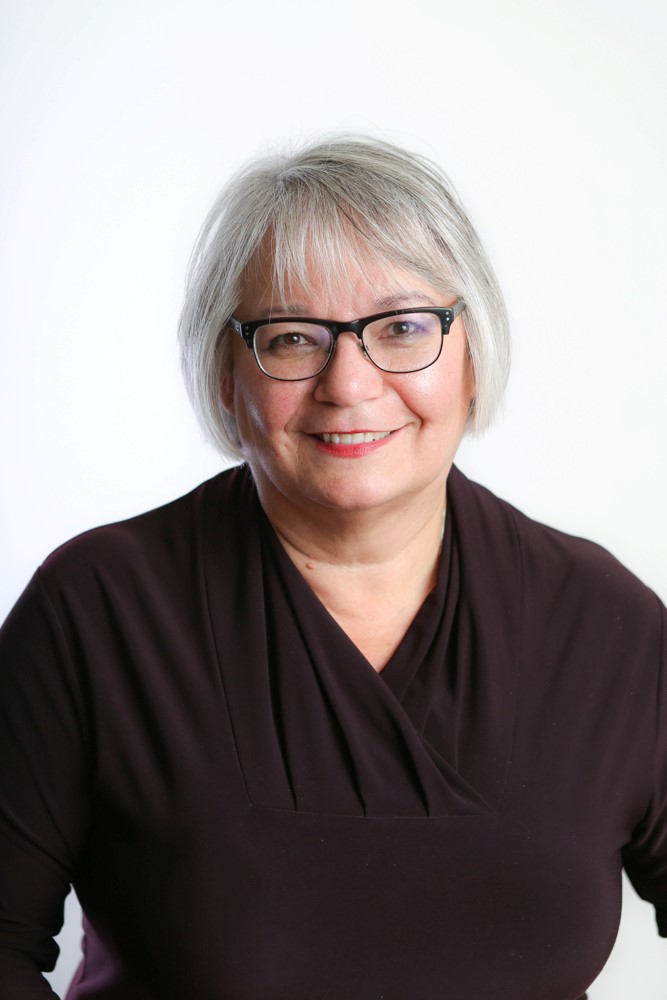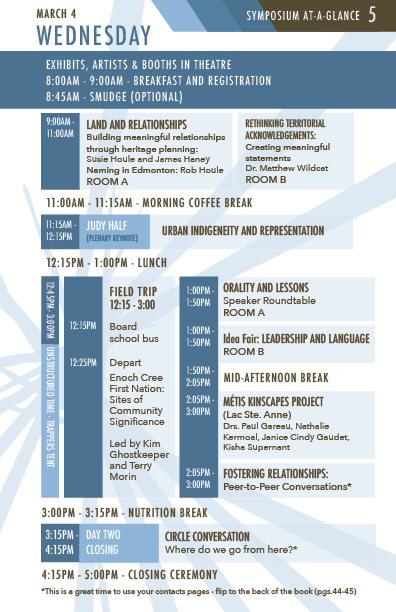In the lead-up to the symposium Reconciliation and Resurgence: Heritage Practice in Post-TRC Edmonton on March 3 and 4, Steering Committee member Kim Ghostkeeper has shared her perspectives on how the symposium can benefit attendees from within and outside of the heritage sector.
Five years after the publication of the Truth and Reconciliation Commission of Canada‘s Calls to Action, the vast majority of the substantial work has yet to be done by heritage practitioners and others who engage with the public in their work and personal interactions. That description, of course, applies to nearly everyone, regardless of demographics. By the same token, this symposium will offer valuable learnings and insights to anyone who attends, regardless of background and familiarity with issues surrounding Truth, Reconciliation, Resurgence, and the United Nations Declaration on the Rights of Indigenous Peoples.
Below are Ghostkeeper’s thoughts on how participants can find new ways forward through the symposium.
 The Evolution of the Symposium
The Evolution of the Symposium
Early on there was a skeleton, but the meat has come from the steering committee. We’ve had a wonderful relationship of hearing each other, including some hard conversations, so we really are modelling what we hope happens at the symposium itself. It’s taking an organic shape, partly from the conversations around the steering committee and partly from who has answered the call, and the kinds of things they’re interested in bringing to the symposium.
A lot of people have asked, “Do you think I should come to it?” My response has been, “If you’re interested in knowing about the type of relationship Indigenous and non-Indigenous people should have, then this will give you a better understanding.” It will push some of your considerations, your perceptions, and your biases, allowing you to challenge your own thinking and maybe hear things that you hadn’t expected or intended.
Symposium Vs. Conference
This is an opportunity to talk with as opposed to being talked at. There will be places and spaces within this symposium where what we might consider to be experts will be presenting, but there will be lots of room for perspectives to be challenged and for participants to be in dialogue with each other. That happens at a symposium; it doesn’t often happen at a conference.
Idea Fair
The Idea Fair is an opportunity to host a conversation. It might be something that an organization or an individual is operating already; perhaps an initiative that the group has been engaged in, which they believe is an effort in reconciliation. This example comes to mind even though this topic may not be part of the Idea Fair, which is still being developed. I just attended an art installation at Norquest College about Métis involvement with residential schools. Somebody might host that kind of a conversation and others would make contributions. I’m Métis and my mother went to residential school, and somebody at that table might be able to help get me closer to the story of my mother’s time in residential school. Otherwise, somebody may want to use that time in the Idea Fair to teach. A good example might be that we use art as a way of opening conversation for people. We have a couple of people who are artists involved in this initiative, so they might teach others around the table about how to use art tools to open up a dialogue with Indigenous and non-Indigenous people; it’s a bit of a show-and-tell. So it could be just two people sitting at a table or it could be ten people.
Relevance Outside the Heritage Sector
The symposium is relevant to any public space from schools to museums to libraries and community centres. Their intention is to serve the public, and in that public are an awful lot of Indigenous people. And if you don’t have even a basic understanding, you are really doing a disservice to the job that you have been asked to do.
Difficult Conversations
One of those conversations is appropriation. We all have a different understanding of what that means, and a different responsibility. When we talk about this relationship-based new space that we’re moving towards, do I have the right to tell someone else’s story, and how do I tell that? Do I have the right to create a story on behalf of? In collaboration with? What does that look like? How would I do that? How do I check myself? Where does my responsibility end and someone else’s begin? As well, I think we still live in a time of pan-Indian consideration. I’ve been around in Edmonton since I was twenty years old. And there was a time when I called myself Native. We don’t use that terminology anymore and young people are very specific on what their connections are, who they are, and where their ancestral roots dive into. So they’re not willing or prepared to have this sort of pan-Indigenous presentation of things. Which means that we have to be way more interested and way more inquisitive.
Reconciliation and Resurgence
Part of my journey is to have some reconciliation with myself, because I have been around for a long, long time. In my belief system, I’m put on this earth to do something. And sometimes you wonder, have you done what you are here to do? On one level we are reconciling with the fact that you can only do what you can do as a human being. Personally, the resurgence I feel is my responsibility to light the candle for others and to support others who are moving forward in directions I’d never even thought about in this relationship-building journey. And to be a collaborator, sometimes a cheerleader, sometimes hopefully a wise woman. I realize that because of the spaces I walk in, I don’t always see just how much work there is to do. Last year I was out on a holiday and I found myself sitting in a room with somebody having a conversation about a very difficult subject, residential schools, and they had a very limited understanding but they certainly had a very strong opinion. At one point it got quite heated and I was going to shut it down. One of the women in the room said, “No, I want us to talk about this because my kids are sitting here and I know they’re listening. They need to hear this conversation. The symposium for some people will be a beginning point of conversations; for others it will be a continuation of the work they’ve been doing their whole life and will do their whole life.

Please feel  free to contact Kim Ghostkeeper at symposium@edmontonheritage.ca with any questions regarding the symposium.
free to contact Kim Ghostkeeper at symposium@edmontonheritage.ca with any questions regarding the symposium.